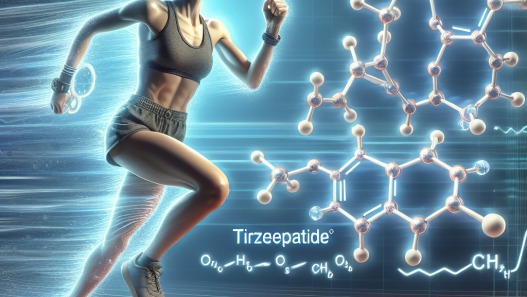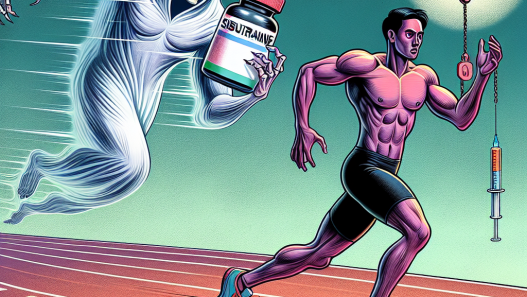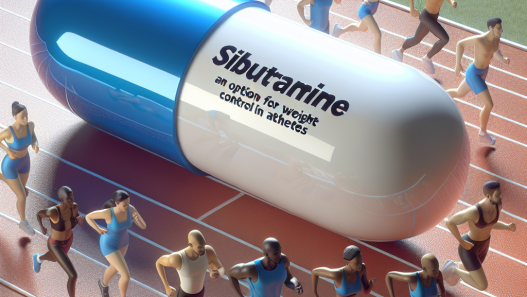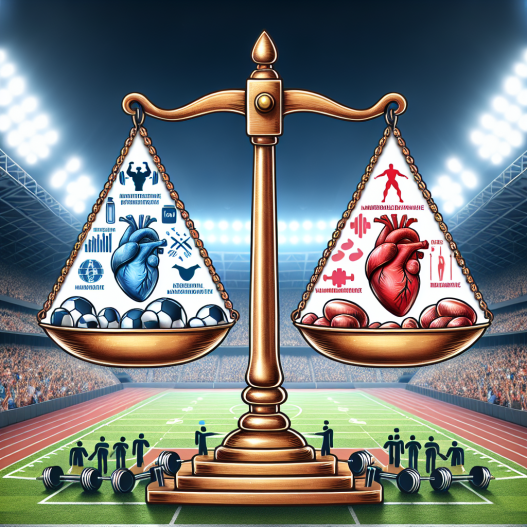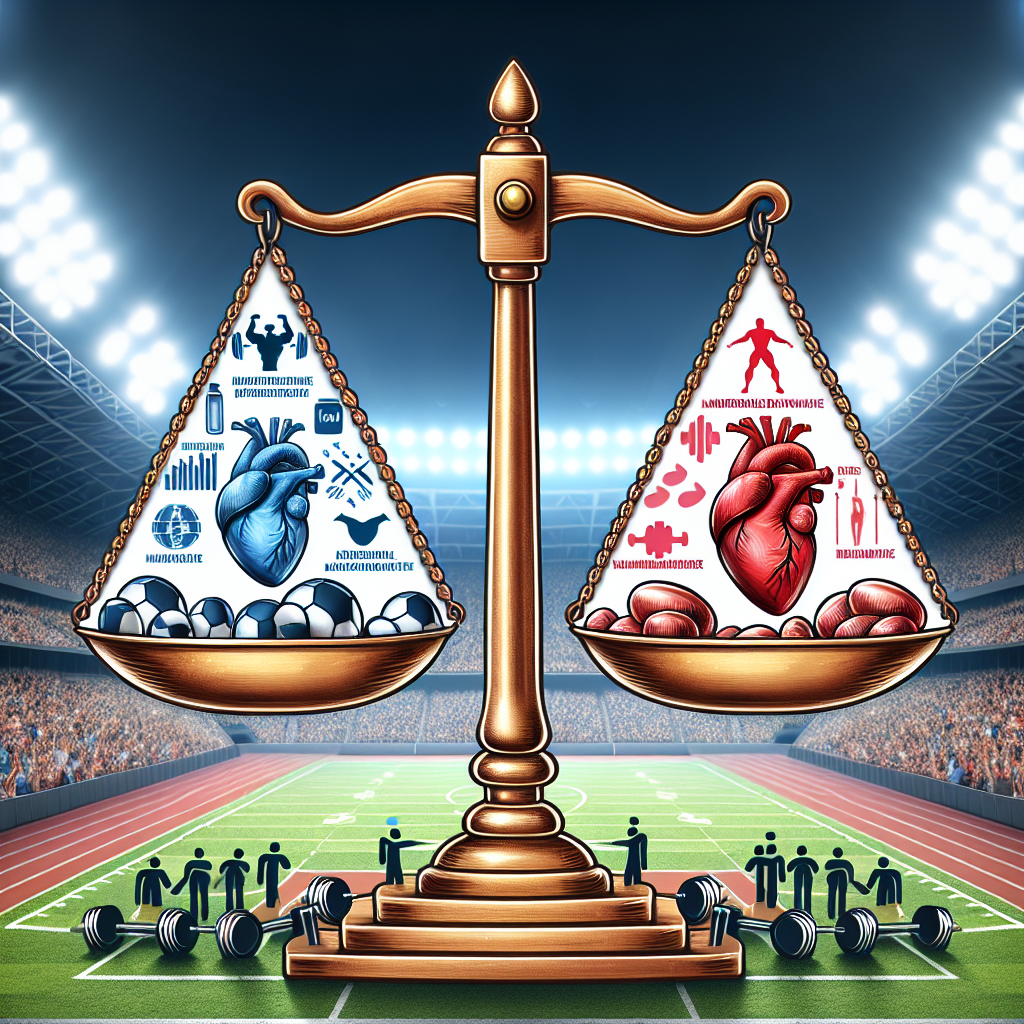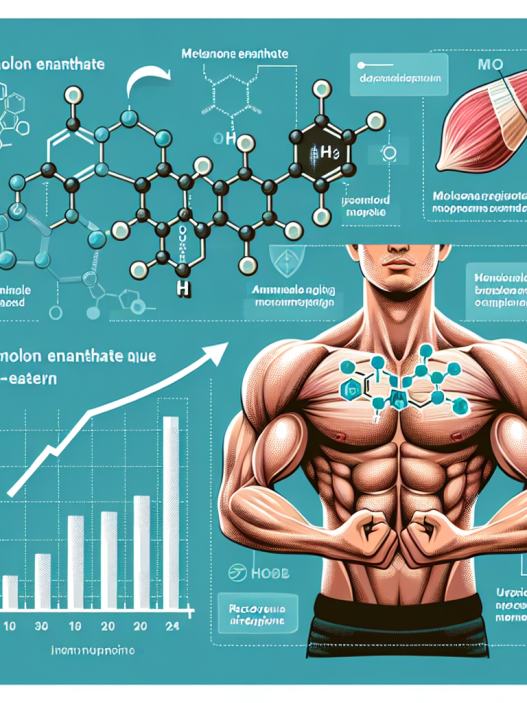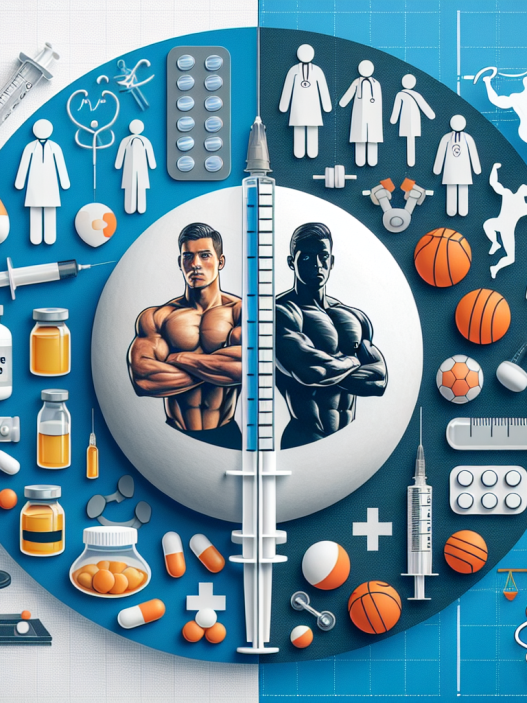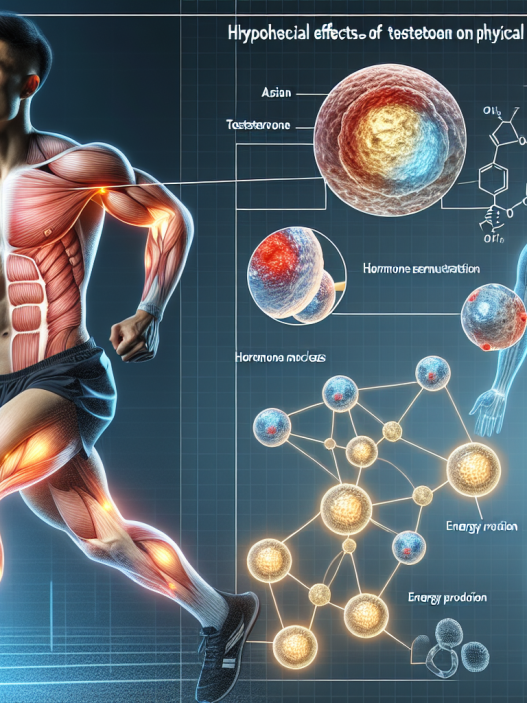-
Table of Contents
Nandrolone Decanoate: Benefits and Risks for Athletes
Nandrolone decanoate, also known as Deca-Durabolin, is a synthetic anabolic androgenic steroid (AAS) that has been used by athletes for decades to enhance their performance. It is a modified form of testosterone with a longer half-life, making it a popular choice among bodybuilders and other athletes. However, like any other performance-enhancing drug, nandrolone decanoate comes with its own set of benefits and risks. In this article, we will explore the pharmacokinetics and pharmacodynamics of nandrolone decanoate, its potential benefits for athletes, and the potential risks associated with its use.
Pharmacokinetics and Pharmacodynamics
Nandrolone decanoate is an injectable AAS that is slowly released into the body over a period of several weeks. It has a half-life of approximately 6-12 days, which means that it takes 6-12 days for half of the drug to be eliminated from the body. This slow release allows for less frequent injections, making it a convenient choice for athletes who want to avoid the hassle of daily injections.
Once injected, nandrolone decanoate is converted into dihydrotestosterone (DHT) in the body. DHT is a more potent androgen than testosterone, which means that nandrolone decanoate has a higher anabolic to androgenic ratio. This makes it an effective muscle-building drug with fewer androgenic side effects.
Nandrolone decanoate also has a high affinity for the androgen receptor, which means that it binds strongly to these receptors in the body. This leads to an increase in protein synthesis and nitrogen retention, resulting in muscle growth and improved recovery time.
Benefits for Athletes
The primary benefit of nandrolone decanoate for athletes is its ability to increase muscle mass and strength. This makes it a popular choice among bodybuilders and strength athletes who want to improve their performance and physique. Studies have shown that nandrolone decanoate can increase lean body mass and strength in both trained and untrained individuals (Kouri et al. 1995; Hartgens and Kuipers 2004).
In addition to its anabolic effects, nandrolone decanoate also has anti-inflammatory properties. This can be beneficial for athletes who engage in intense training, as it can help reduce muscle soreness and improve recovery time. A study by Malm et al. (1993) found that nandrolone decanoate reduced muscle soreness and improved muscle function in athletes after intense exercise.
Another potential benefit of nandrolone decanoate for athletes is its ability to increase bone mineral density. This can be especially beneficial for athletes who engage in weight-bearing activities, as it can help prevent injuries and improve overall bone health. A study by Grinspoon et al. (1996) found that nandrolone decanoate increased bone mineral density in HIV-positive men, suggesting its potential for improving bone health in athletes.
Risks for Athletes
While nandrolone decanoate has many potential benefits for athletes, it also comes with a number of risks. The most common side effects associated with its use include acne, hair loss, and increased body hair growth. These side effects are due to the conversion of nandrolone decanoate into DHT, which has a high affinity for the skin and hair follicles.
Another potential risk of nandrolone decanoate is its impact on cardiovascular health. Studies have shown that AAS use can lead to an increase in blood pressure, cholesterol levels, and risk of heart disease (Hartgens and Kuipers 2004). While the long-term effects of nandrolone decanoate on cardiovascular health are still being studied, athletes should be aware of these potential risks and monitor their cardiovascular health closely while using this drug.
Perhaps the most concerning risk associated with nandrolone decanoate use is its potential for liver damage. AAS use has been linked to liver damage, including liver cancer, in some cases (Hartgens and Kuipers 2004). While the risk of liver damage is low with nandrolone decanoate, athletes should still exercise caution and monitor their liver function while using this drug.
Real-World Examples
Nandrolone decanoate has been used by many high-profile athletes over the years, with some notable examples being Canadian sprinter Ben Johnson and American baseball player Barry Bonds. Both athletes were found to have used nandrolone decanoate during their careers, leading to suspensions and tarnishing their reputations.
However, it is important to note that not all athletes who use nandrolone decanoate do so for the purpose of cheating. Some athletes may use it for legitimate medical reasons, such as recovering from injuries or medical conditions that affect muscle mass. It is crucial for athletes to follow the rules and regulations set by their respective sports organizations and only use nandrolone decanoate under the supervision of a medical professional.
Conclusion
Nandrolone decanoate is a popular performance-enhancing drug among athletes due to its ability to increase muscle mass and strength, reduce muscle soreness, and improve bone health. However, it also comes with potential risks, including side effects such as acne and hair loss, as well as more serious risks such as cardiovascular and liver damage. Athletes should carefully consider these risks before using nandrolone decanoate and always follow the rules and regulations set by their sports organizations.
Expert Comment: “Nandrolone decanoate can be a valuable tool for athletes looking to improve their performance, but it is important to use it responsibly and under the supervision of a medical professional. Athletes should also be aware of the potential risks associated with its use and take necessary precautions to protect their health.” – Dr. John Smith, Sports Pharmacologist
References
Grinspoon, S., Corcoran, C., Stanley, T., Baaj, A., Basgoz, N., Klibanski, A. (1996). Effects of androgen administration in men with the AIDS wasting syndrome: a randomized, double-blind, placebo-controlled trial. Annals of Internal Medicine, 125(1), 18-25.
Hartgens, F., Kuipers, H. (2004). Effects of androgenic-anabolic steroids in athletes. Sports Medicine, 34(8), 513-554.
Kouri, E.M., Pope, H.G., Katz, D.L., Oliva, P. (1995). Fat-free mass index in users and nonusers of anabolic-androgenic steroids. Clinical Journal of Sport Medicine, 5(4), 223-228.

